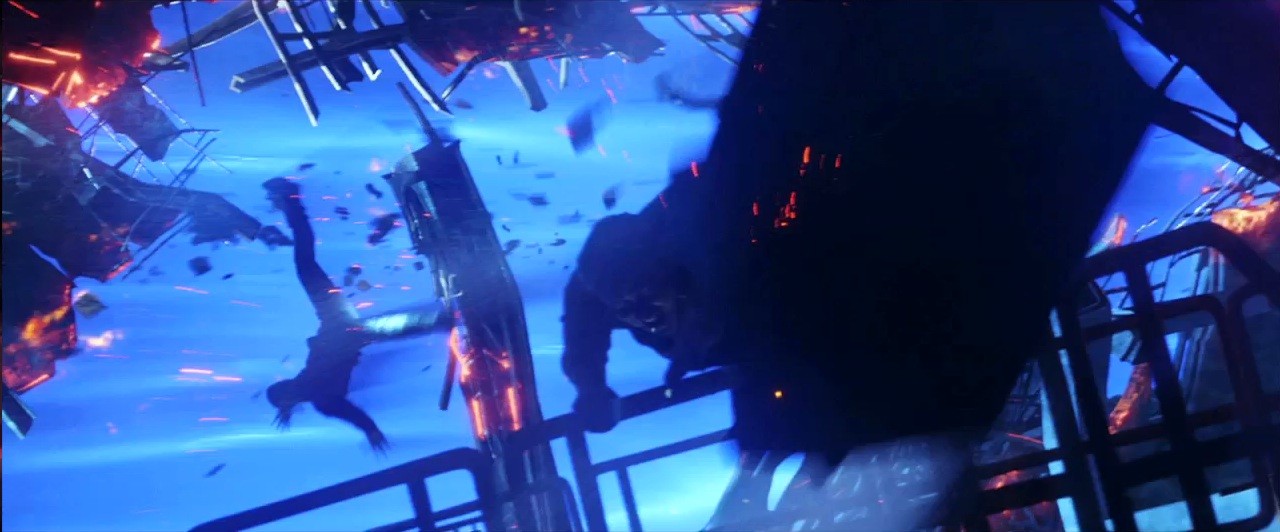
What Happens When You're Sucked Off Into Space?
Share
It is time again to delve into the annals of knowledge and Ask ARSE:
A follower has tickled our lobes and sked an interesting question about the nature of space...
QUESTION:
In movies, when someone is in a spaceship that is suddenly exposed to vacuum, you see the air get sucked off into space, and our protagonist has to cling for dear life to avoid the same. How strong are these forces in real life?
- Stuart
ANSWER:
Hi Shane, thanks for the question.
They could be much weaker. Could be much stronger, depending on the size of the breach, the person’s proximity to it, and the size of the compartment.
First, let’s clear something up.
Nothing is ever “sucked off into space”. There is no such thing as a suction force. In explosive decompression, things are propelled out into space by the air pressure behind them. They are pushed.
In the movies, when a spacecraft (or aircraft at high altitude) opens a breach, the passengers grab the nearest seat belt and swing in the gale because that looks cool and dramatic. In real life, how likely that is depends…
In an Apollo space capsule, you only had 5.66337 metres cubed, or less than five kgs of air in the capsule with you. That was enough to hold an inward opening hatch closed (as it did in the LEM) but simply lacked enough mass to hurl an 80kg astronaut out into space.
Let’s say you’re in the ISS when a collision creates a sudden, large breach in the pressure hull nearby. The ISS is pressurized to 14.7 psi instead of the 5 psi of pure oxygen used in Apollo. If the breach is a circular hole roughly 76.2cm across (hatch sized, in other words) that’s an area of 4561.28 square centimetres, for a total force against that now missing bulkhead of 4714.1855kg.
If you are near the breach and unsecured, you will be through it into vacuum in far less time than it takes you to notice anything’s happened.
Game over.

Unless you’re in a small compartment with the hatches closed. Then there simply isn’t enough mass in the air to overcome your inertia. The air will rush past you, maybe get you moving, but you’ll grab hold of something—the air being gone in a moment, and very undramatically head for safety. Of course, you’re in vacuum now, and cannot open a hatch to anything that can’t be evacuated ahead of you and used as an air lock, so you’re in a pickle.
If you are near the breach but wearing a seat belt, any part of you that can reach it with the application of the weight of a large SUV will be outside, and any part that can hit the edge of the breach will hit it with the force of a large SUV sitting on it. Almost certainly, game over. Again, if in a large compartment.
If you are near the breach but securely buckled with a five point harness and wearing a crash helmet and face protection, you’re fine as long as you don’t get hit by something sharp and as long as you don’t think “oh shit, there goes my air” and do something stupid like release the buckle. If you wait till the air is gone, and can then release the buckle and get to a full-pressure face mask supplying 100% oxygen (as would be the case on a flight deck) you might just make it. Of course you would still be in vacuum, which it a problem.
If you are on the other side of the compartment—if there is a closed door behind you, you’re fine. You won’t even muss your hair is long as you don’t do something stupid like jump toward the hatch as the air between you and said hatch goes bye bye.
Of course, in a moment you’ll be in vacuum, so I hope you are wearing a pressure suit and just need to seal the helmet. If the door behind you is open, then all the air behind you (in all the connected compartments) along with the people and loose debris swept up in the maelstrom is about to hit you—and push you toward the breach. Since the air here is passing through a space three or four times the area of the breach, the force on your will be three or four times lower, and you might stand a chance of holding on. But then you will be in vacuum.

But if you are in that moronic scene near the end of Star Trek Into Darkness, when Kirk and Khan are flying through space, Scotty’s supposed to open a door to space so they can enter the ship, and a big mean man is holding him at gunpoint…
And Scotty hits the button at the last second and the airlock door magically vanishes in a puff and … Yeah… They all die. Except for phaser man. That was a shuttle sized breach in a cavernous room. It would have taken an hour for the air to escape, and from the place Scotty was standing—a long way from the breach, there would not even have been a breeze.
The bad guy would not have been sucked excitingly away. Understanding physics a whole lot better than most movie makers, he would not even have been distracted. He’d have shot Scotty, finished his scotch, closed the hatch, and called maintenance to scrape the space jumpers off the hull.
So how forcefully someone is thrust out a breach is a function of the size of the breach, the size of the compartment and the pressure of the air inside it, the person’s distance from the breach and location relative to escaping airflow, and to a lesser extent, the person’s mass (and therefore inertia).
And there you go.
You’ve come this far…
Why not venture a little further into A.S.S. - our exclusive Australian Space Society.
And keep thrusting Australia into the deep unknown…
#Space_Aus





1 comment
This all ignores the very likely scenario where the victim, understandably, holds their beath. Not good.